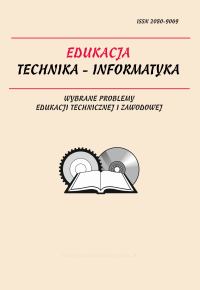A model of a class that implements animated movies developed for specific purposes of learning in primary schools
Keywords:
a short multimedia animated movie developed for specific purposes, innovative approach, computer, Year 1 to Year 4 gradesAbstract
The penmanship of our instructional team has given birth to a specifically developed short multimedia animated movie (Cow Affairs) – as a new resource in learning and an alternative to the traditional approach to teaching in schools in Serbia. Its content is designed for pupils of the first grade and for the school subject The World Around Us, for the lesson on Deriving Benefits from Cattle – Cow. Since the pupils of Year 1 in Serbia are the most overwhelmed pupils in Europe, the roots of which are in the old-fashioned technologies, books being the domineering resource, overwhelming goals and tasks for nonfunctional skills and old syllabus, we aim to innovate the approach to teaching and learning and to bring about dynamic changes in the process of learning of our children. The described model here of a class that implements animated movies tends to innovate the traditional way of teaching, to modernize it, to make it attractive, engaging and encouraging for our Year 1 pupils. The results published abroad on Computer Assisted Learning with Animated Movies among first graders show that IT has a great supremacy over the traditional approaches to teaching. The described animated movie will only make for the Introduction to a series of animated movies with the follow-up quizzes for on-line (or DVD) learning in primary schools. The described animated movie will show the extent and depth of our research and teachers’ questionnaire answers before its immediate use in the classroom.Downloads
Published
2011-12-15
How to Cite
HILČENKO, S. (2011). A model of a class that implements animated movies developed for specific purposes of learning in primary schools. Journal of Education, Technology and Computer Science, 4(2), 191–198. Retrieved from https://journals.ur.edu.pl/jetacomps/article/view/7008
Issue
Section
MULTIMEDIALNE OPRACOWANIA DYDAKTYCZNE
License
Copyright (c) 2011 Journal of Education, Technology and Computer Science

This work is licensed under a Creative Commons Attribution-ShareAlike 4.0 International License.

